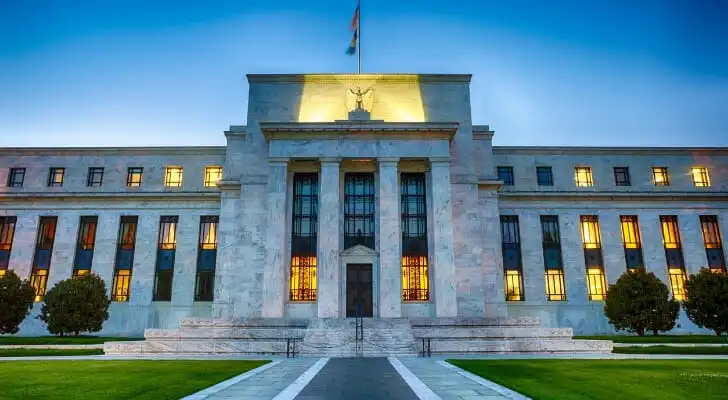The Federal Reserve may be losing confidence in its long-standing prediction that current inflation is temporary. Or at least the U.S. central bank appears to be bracing for “temporary” to last longer than earlier thought. And if that newfound caution is warranted, investors would be well advised to take a look at whether their portfolios are adequately protected against a longer-than-expected inflationary cycle. A financial advisor can help you keep your investments in the best possible condition to weather inflation.
The Official Narrative Is Changing
For several months, inflation has been running well above the Federal Reserve’s 2% annual target. For example, between August 2020 and August 2021, the personal consumption expenditures (PCE) price index grew by 4.3%. Despite this, in late September the Fed’s powerful rate-setting panel attributed that inflation to “largely transitory factors” and repeated that inflation would “moderately” exceed 2%. Chairman Jerome Powell, whose term is up in February 2022 and whom President Biden has not renominated for a second four-year term, recently said the “spike in inflation is so far largely the product of a relatively narrow group of goods and services,” and that “households, businesses, and market participants also believe that current high inflation readings are likely to prove transitory.”
It’s a message the central bank has been giving for much of 2021 – but it’s a message that may be changing.
The St. Louis Fed published a report on Oct. 7 warning that current inflation may last longer than anticipated.
“Overall, even though higher inflation may be transitory, the transition may last longer than expected,” the St. Louis Fed report stated. “The risk is that the response of households, market participants and policymakers to a prolonged period of high inflation may itself sow the seeds of more persistent higher inflation.”
Private analysts also began warning that inflation should be taken more seriously.
“Even if transient, higher inflation has already decreased living standards, and further damage is anticipated as just 18% of all households anticipated income gains would be larger than the expected inflation rate,” according to a study from the University of Michigan.
Why the Fed’s Views Are Changing

The St. Louis Fed’s report reflects analysis of data on personal consumption expenditures, which is the total amount of money citizens spend on goods and services. It also reflects data from the New York Fed on inflation expectations. The New York Fed’s August 2021 Survey of Consumer Expectations found that short- and medium-term inflation expectations rose to new series highs of 5.2% and 4%, respectively.
Robust inflation can be found in numerous sectors:
- The U.S. benchmark crude oil, West Texas Intermediate, topped $80 per 42-gallon barrel on Oct. 8 – its highest level since November 2014.
- The prices that dealers pay for used cars in the wholesale market jumped, month over month, 5.3% in September, the Manheim Used Vehicle Value Index reported. That’s up 27.1% from 2020.
- Home prices nationwide surged year over year by 18.1% in August 2021 compared with August 2020, marking the largest annual gain in home prices in the 45-year history of the CoreLogic Home Price Index. CoreLogic’s CEO said, “We expect to see the trend of strong price gains continue indefinitely with large amounts of capital chasing too few assets.”
- The cost of food keeps rising. Meats, poultry and fish rose 7.9% from August 2020 through August 2021 and eggs climbed 9.9% in the same period, according to Department of Agriculture data.
What Investors Should Do to Combat Inflation
Investors should respond to news of inflation in two ways.
Assess your portfolio’s risk
The first step in seeing if the risk in your portfolio needs to be lowered is to assess how much risk your investments have and what kind of risk are involved. There are three kinds of risk to evaluate: asset, systematic and portfolio.
- Asset risk depends entirely on the individual investment. For example, the asset risk of a stock tends to be relatively high. Stocks are relatively volatile securities. Meanwhile, bonds tend to be relatively stable, low-yield securities, with most of the asset-specific risk having to do with the likelihood of default on the bond’s underlying debt.
- Systematic risks are risks inherent to every asset in a given market. For example, a stock market downturn would be considered a systematic risk, as it would likely affect the value of most stocks. Other issues considered systematic risk are issues such as inflation, Federal Reserve interest rates, legal changes and any other external factors that could affect the value of all your investments at once.
- Portfolio risk is the risk inherent to your own portfolio. Many portfolio risks, such as currency risk, are largely unavoidable. However, a portfolio heavily invested in certain industries can face industry risk, for example, if those sectors lose value. A portfolio with little diversification can face concentration risk, while a portfolio with little potential for growth can face a risk of stagnant overall value.
Consider low-risk securities
Depending on your assessment of the type and degree of risk in your portfolio there are five types of common securities that may help you lower your risk level. Besides these there are other choices of alternative investments that may also provide protection against either demand-pull inflation or cost-push inflation. Such investments could include expensive musical instruments like a Stradivarius cello, paintings, first-editions of classic books or rare vintages of wine or Scotch.
- Commodities, which are raw materials (gold, oil, industrial minerals) or agricultural products (beef, coffee, timber) that can be traded, offer protection against inflation. As economic forces push the price of goods and services upward, commodities often become more expensive during times of inflation. For example, energy commodities, which include oil and all types of gasoline, rose in price by nearly 42% for 12 months ending in July, according to CPI data.
- Consumer staples, unlike consumer cyclicals, tend to do better than others during inflationary spells. These include companies that sell basic foods like milk and bread and necessities such as toilet paper. Pharmaceuticals and utilities are also used as inflation hedges.
- Investing in real estate investments including real estate investment trusts (REITs) are a popular response to inflation. These shares tend to pay sizable dividends and their underlying real estate assets tend to become more valuable during inflationary episodes. Owning actual real estate is also a good inflation hedge.
- Interest rates generally rise with inflation and that means fixed-income investments, especially longer-term ones, tend to lose value. Short-term fixed-income securities like bonds and other income securities can mitigate this effect because as rates rise new bond issues reflect the current interest environment. Money market fund returns are particularly closely tied to current interest rates.
- The value of Treasury inflation-protected securities is directly tied to the consumer price index, increasing as inflation rises. When the bond matures, the investor receives either the amount of the original principal or the amount adjusted for inflation.
The Bottom Line
 Evidence that the inflation that began after the pandemic hit remains robust is hard to miss. And the persistence of that evidence may be tempering the Federal Reserve’s don’t-worry approach to the matter. While it’s impossible to predict with infallibility whether or not inflation will ease shortly or continue into 2022, it is entirely possible to take prudent steps. These include assessing your portfolio’s risk and considering how – if needed – to lower it.
Evidence that the inflation that began after the pandemic hit remains robust is hard to miss. And the persistence of that evidence may be tempering the Federal Reserve’s don’t-worry approach to the matter. While it’s impossible to predict with infallibility whether or not inflation will ease shortly or continue into 2022, it is entirely possible to take prudent steps. These include assessing your portfolio’s risk and considering how – if needed – to lower it.
Tips on Weathering Inflation
- Work with a pro. Consider working with a financial advisor as you assess your portfolio’s risk and consider how to lower it. Finding a qualified financial advisor doesn’t have to be hard. SmartAsset’s free tool matches you with up to three financial advisors in your area, and you can interview your advisor matches at no cost to decide which one is right for you. If you’re ready to find an advisor who can help you achieve your financial goals, get started now.
- Owning real estate. Because the value of real estate also tends to rise in an inflationary environment, owning property or investing in a real estate investment trust (REIT) are also thought of as viable strategies to hedge against inflation. Check out our recent study on the best cities to invest in long-term rental properties, if you are thinking of leasing a home or apartment.
- Consider short-term bonds. Since interest rates typically rise with inflation, long-term fixed-income securities tend to lose value. However, short-term fixed-income securities – including bonds – may offer better returns. This is due to the fact that as rates rise, new bond issues reflect the current interest environment.
Use our free inflation calculator to determine the buying power of a dollar over time in the U.S.
Photo credit: ©iStock.com/traveler1116, ©iStock.com/Altayb, ©iStock.com/gilaxia
